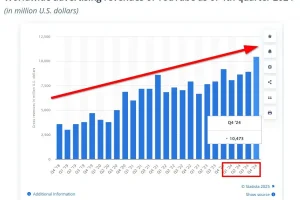Derivatives and Options Trading are the financial instruments that derive their value from underlying assets such as stocks, commodities or foreign currencies. They allow investors to hedge their risk, speculate on the price of a security and gain access to hard-to-trade markets.
While derivatives offer a convenient way to achieve these goals, they carry their own risks. These include counterparty risk, the risks of leverage and complicated webs of derivative contracts that can cause systemic problems.
Definition
Derivatives and Options Trading is the act of speculating on the future price of an asset, such as stocks or currencies. It involves the purchase of call options, which give the holder the right to buy a stock at a certain price, and put options, which grant the holder the right to sell a stock at a particular price.
Derivative contracts can serve a number of different purposes, from hedging risks to speculation or arbitrage. They are based on the performance of assets, interest rates, currency exchange rates or indexes.
For example, a corporation may want to hedge a large loan with a fixed rate of interest that will reprice every six months. The corporation could buy a forward rate agreement (FRA).
Another common derivative is a swap, which is an agreement to exchange cash (flows) on or before a specified future date based on the underlying value of currencies, bonds/interest rates, commodities, or stocks. A forward contract typically has a higher premium than the spot price, which means the party buying the derivative will receive a larger amount of money in the event of a change in the price of the underlying asset.
Types
Derivatives are a type of financial instrument that derives its value from an underlying asset. These assets can include stocks, stock indexes, exchange-traded funds (ETFs), fixed income products, foreign currencies, and commodities.
Derivative trading can add diversification to your portfolio, but it is also highly speculative and involves significant risk. Before you start trading, it is important to have a clear understanding of your investing goals and desired position in the market.
There are two types of derivatives that traders use to trade in the stock market: Futures and Options. These derivatives give a buyer the right but not the obligation to buy or sell an underlying security at a specified price on a certain date in the future.
For a trader, this means that he can make a profit if the price of the underlying security rises. But he will have to bear losses if the price declines.
The price of an option is influenced by several factors, including the underlying security’s volatility and interest rates. The price of a call option increases as interest rates rise, and the price of a put option decreases as interest rates fall. The strike price, time period, and expiration date are also factors that affect the price of an option.
Advantages
Derivatives and Options Trading offer a range of advantages to investors. They are a convenient way to meet a variety of risk management goals, including hedging, speculation, and leverage.
They can also help you gain exposure to assets that are difficult or expensive to buy in the open market. For example, you could trade an oil derivative to get access to the oil market without actually having to buy a barrel of oil.
In addition, derivatives and options are often more liquid than the underlying asset, which can lower transaction costs for the investor. This is especially true with futures contracts, which can give the investor exposure to an underlying asset without paying any money up front.
Despite their advantages, derivatives and options can carry risks as well. The main ones include speculative risk, counterparty risk, and time restrictions.
Speculative risk is the most serious problem with derivatives, as it can cause losses to entities who speculate on a future price movement of an underlying asset. It can also expose participants to counterparty risk, which is the risk that the counterparty defaults on its promise to pay or exercise a contract. Fortunately, a wide variety of strategies can minimize this risk, but it still exists and should be considered in any trading plan.








